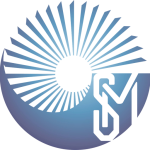Speaker
Description
Challenges in technology have been significant in reducing the size of components such as transistors, antennas, MEMs, LEDs, lasers, and many devices for biomedical and environmental improvement applications. Therefore, the concept of nanotechnology has played a significant role in the manufacturing and study of new materials at this scale. In the photonic area, the interaction between light and matter has been researched for the polaritons behavior with metallic patterns embedded in a microcavity. A microcavity device is formed by two mirrors and an active medium, which, in our case, is composed of quantum wells. The mirrors, known as Distributed Bragg Reflectors (DBR), are made by stacking pairs of layers of two different materials, each with its own refractive index. The thickness of each layer is equal to a quarter of the resonance wavelength of the cavity. Polaritons are hybrid light-matter quasiparticles formed by the strong coupling between the cavity mode and the quantum well excitons.
In this work, we present the progress in the fabrication of a hybrid microcavity, where the two DBRs are made of different materials. Particularly, we report the development by e-beam lithography of metallic patterns using the INSPECT F50 equipment at Laboratorio Nacional de Ciencia y Tecnología de Terahertz (LANCYTT) within the Coordinación para la Innovación y Aplicación de la Ciencia y la Tecnología (CIACYT). In this project, we are endeavoring to create various patterns using circles to form lattices, such as the Lieb, kagome and moiré structures. Our objective is to produce strong confinement potentials for exciton-polaritons while simulating strain in these lattices by adjusting the separation between the lattice sites. Throughout this journey, we have achieved promising results, as we are currently presenting in this work.
This work was supported by
CONAHCYT PhD grant.
Reference
E. A. Cerda-Méndez et al, Quantum fluids of light in acoustic lattices, J. Phys. D: Appl. Phys. 51 (2018). https://doi.org/10.1088/1361-6463/aa9ec7.
| Keywords | DBR, microcavity, e-beam lithography |
|---|---|
| Author approval | I confirm |
| Author will attend | I confirm |

